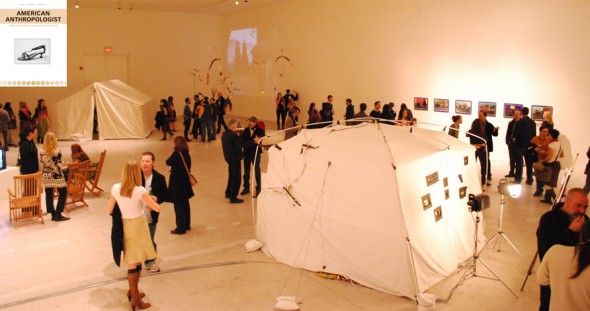Ethnographic Terminalia reviewed in American Anthropologist

Ethnographic Terminalia 2009, Crane Arts, Philadelphia. Photo by Fiona P. McDonald.
An extended review of Ethnographic Terminalia by Shelly Errington (UC Santa Cruz) has just been published in the journal American Anthropologist. The review addresses our first three years of exhibition (Philadelphia, New Orleans, and Montréal) and traces theoretical and methodological connections to broader movements in anthropology and contemporary art. The full article can be downloaded on the Ethnographic Terminalia website here.
An excerpt from the review:
The Curatorial Collective of “Ethnographic Terminalia,” an exhibition of Art and Anthropology, seeks to promote and encourage crossover works and experiments. ET has taken place as a temporary exhibit in conjunction with the annual AAA meetings in 2009, 2010, and 2011, and will take place again in 2012 in venues outside the convention hall but coordinated in the program through the Society for Visual Anthropology (see Figure 1). After the first exhibit, ET had local affiliates—Art Spill in New Orleans (2010) and CEREV (Centre for Ethnographic Research in the Aftermath of Violence) in Montreal (2011); the Curatorial Collective also invited known artists to “anchor” the exhibits prior to the call for submissions. And as of the third, the exhibits have themes: “Field, Studio, Lab” in 2011, “Audible Observatories” in 2012. Artist biographies and commentary can be seen on ET’s well-designed and informative website (http://ethnographicterminalia.org)…
… The works in ET will probably never replace textual ethnographies. But the exhibit is a fascinating multidimensional portal through which we can enter and learn about experiments in thought and technology that intrigue, amuse, and may even inspire us to attempt new forms for our own nonfictional works.”

CEREV » Blog Archive » New review of Ethnographic Terminalia
[…] post published by Kate […]